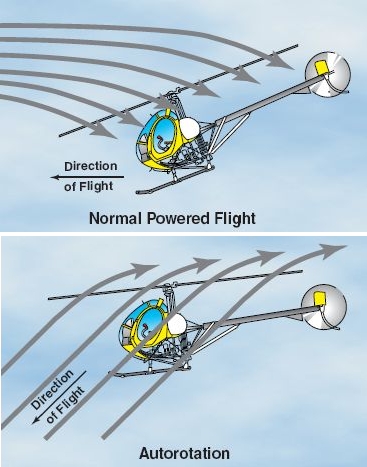Helicopter blades need to be long and thin. The diameter of the rotor disc determines the efficiency of the rotor at low speeds and can be compared to the wing span in fixed-wing airplanes. The rotation creates strong centrifugal loads at the blade roots which grow with the square of the tip radius at a given rotation speed, so they cannot be tapered much. Adding chord to the middle of the blade would increase its area and add more friction drag, increasing the torque needed to keep the rotor spinning. If the helicopter is only designed for hover, the blade tips could be tapered, but the added complications of forward flight make a rectangular blade the better choice.
In forward flight, the speeds due to the blade's rotation and the flight speed add up, increasing local airspeed at the advancing blade and reducing it at the receding blade. Since the center of lift is trimmed to be at the rotor hub using the swash plate, the advancing blade has a smaller angle of attack and the receding blade a higher angle of attack. On the receding blade at high flight speed, the root will be in reverse flow since here the rotation speed will not be high enough to compensate for the flight speed. Dynamic pressure is around zero at the middle radius, and only the tip area sees sufficient dynamic pressure to create the lift which is demanded from the blade. Reducing this tip area would reduce the lift which can be produced there, so designers kept the blade chord constant.
Two effects limit the maximum forward speed: The remaining dynamic pressure at the blade tip of the receding blade, and the maximum Mach number at the advancing blade's tip. In order to increase this maximum Mach number, modern rotor tips are swept, but simple sweep will lead to torsion moments which will twist the blade. The pitching moment along the blade needs to be finely balanced so no torsion loads result. To achieve this, helicopter blade airfoils are either symmetric or reflex, and the tip is first swept forward and then backward, so the resulting lift acts exactly at the elastic axis of the blade. See the picture of such a blade tip below. The small trim tab you can see at the trailing edge is used for fine-tuning the pitching moment of the blade.

Eurocopter Blue Edge rotor blade (picture source)
I would not be surprised if an optimized rotor shape has non-rectangular blades, but my impression is that the gains of optimization are small, especially with the wide spread of operation conditions of all rotor blade sections. The rectangular blade is easy to manufacture and good enough for most cases. However, I have not designed a rotor myself and do not know enough about the details to be more specific.



